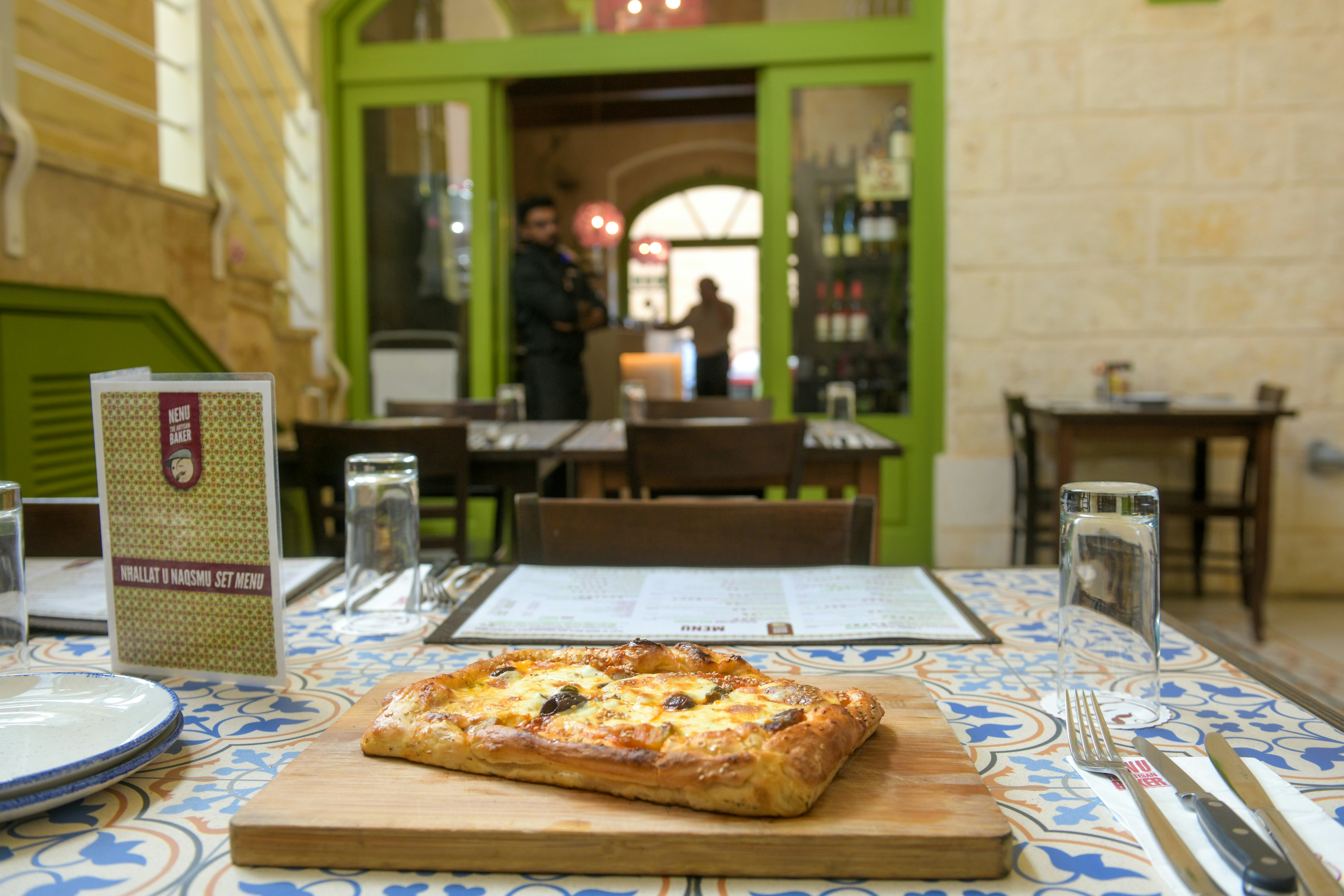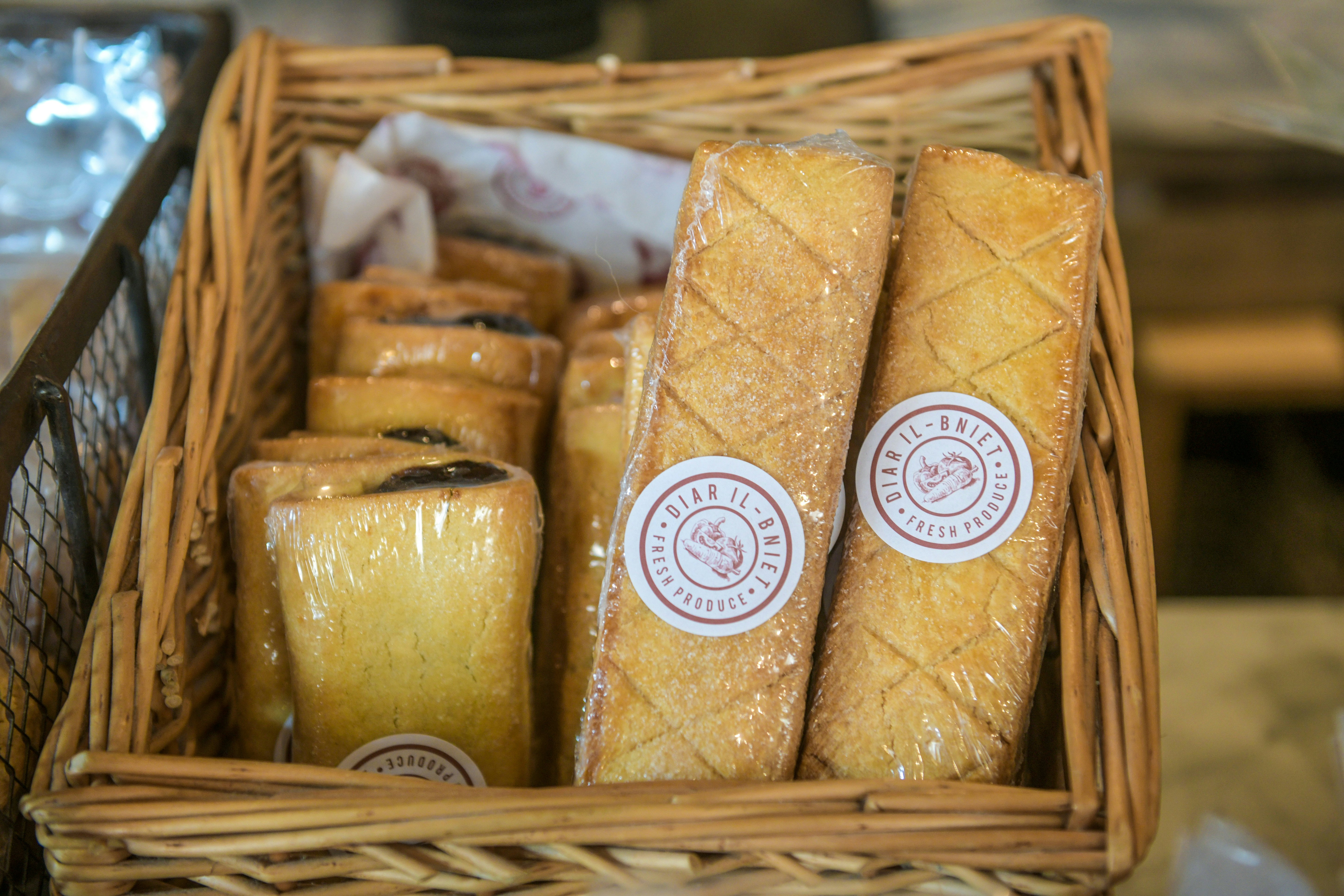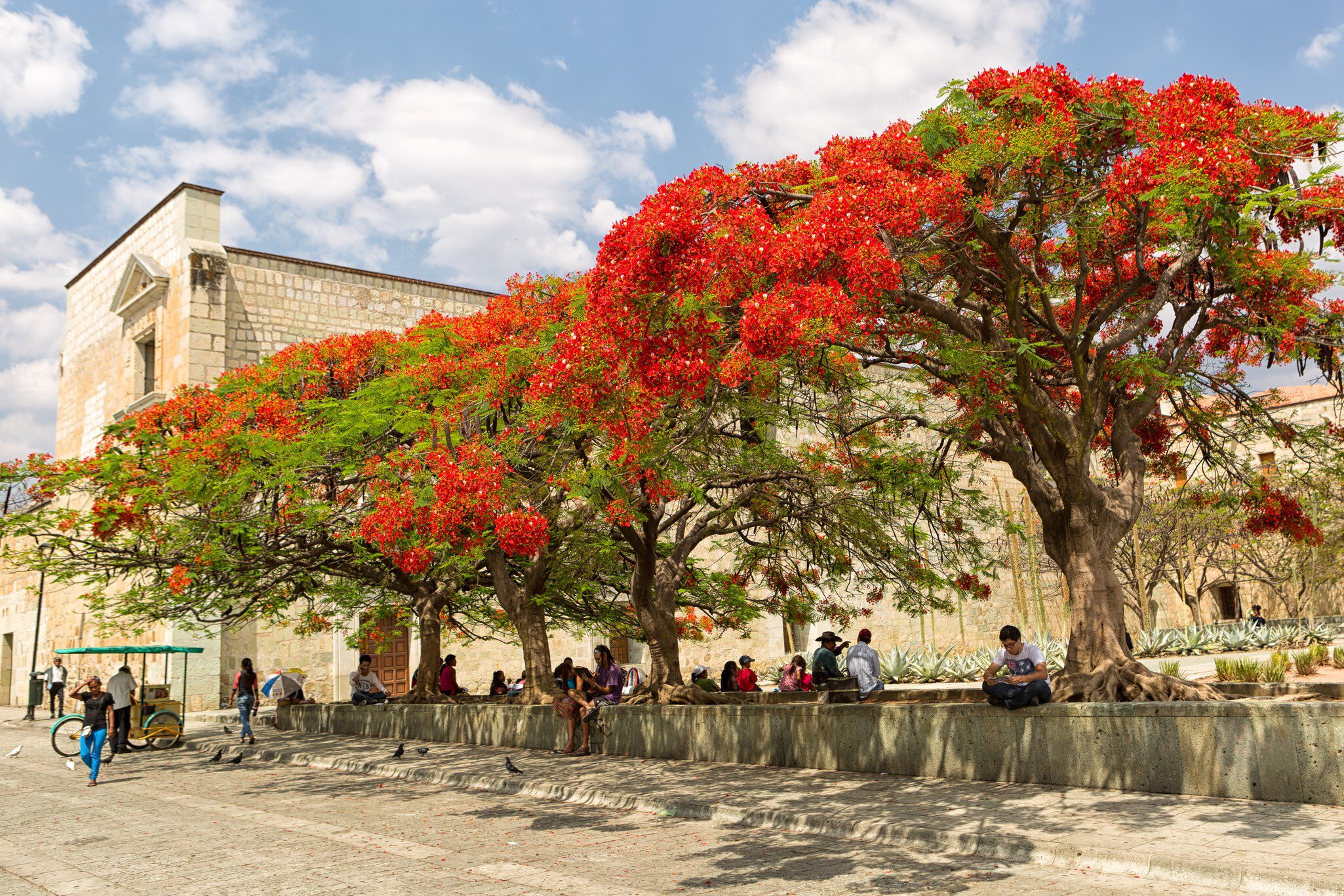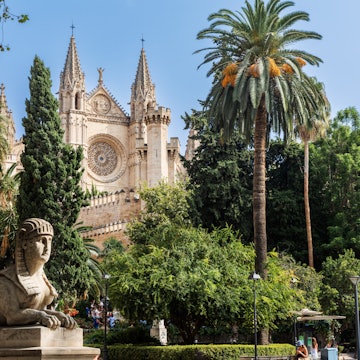
8 of the best snacks, dishes and drinks to try in Malta and Gozo
Jul 30, 2025 • 6 min read

Wine in Valletta, Malta. zstock/Shutterstock
At the heart of the Mediterranean, and blending centuries-spanning Arabic, Italian, French and British culinary influences, Maltese cuisine is both fresh and flavorful. Seafood sourced from the cobalt waters framing the nation’s island trio of Malta, Gozo and Comino features on many menus, and hearty rabbit dishes and fruit and vegetables coaxed from dry and rocky terrain are also popular. Maltese winemakers are inspired by two millennia of viticultural history, while a growing band of local craft brewers are equally innovative. Here are the flavors to look out for.

1. Snack on savory pastizzi
Malta's favorite on-the-go treat is pastizzi, flaky filo-pastry parcels crammed with cheese, peas and spices. A few bakeries offer different fillings including chicken, chorizo, and even pistachio or Nutella, but irkotta (ricotta) and pizelli (mushy peas) are both the most traditional and most popular flavors. Most pastizzerija (pastry stalls) also sell qassatat, one-person pies with the same fillings, but made with short pastry.
Where to try it: Popular pastizzerija chains with multiple outlets include , but Malta's best pastizzi are baked at , also known as Crystal Palace, which has been serving the discerning taxi drivers of Rabat for more than 80 years. Buy a few pastizzi straight from the oven and pair them with milky te fit-tazza (tea in a glass).
​​2. Fuel up on aljotta
With a name derived from the Italian for garlic (aglio), aljotta is a traditional tomato- and garlic-laced fish and seafood soup, often harnessing the seasonal availability of lampuki (dolphinfish), and simmered with rice, parsley, bay leaves and oregano. When fresh lampuki is available from September to December, Maltese chefs often bake torta tal-lampuki as a seasonal special. This traditional fish pie is studded with walnuts, capers, olives and raisins.
Where to try it: Along with other ocean-fresh seafood, aljotta is a specialty of the harborside restaurants in Marsaxlokk. Both and are deservedly popular. Hearty aljotta and elevated Mediterranean views combine at on Gozo, while Valletta's venerable serves torta tal-lampuki from mid-September.

3. Feast on Malta's wood-fired breads
Baked into a flat ring, traditional ftira loaves are used for Malta's best sandwiches, crunchy on the outside, and with a fluffy interior often stuffed with a punchy mix of olives, capers and anchovies. Another wood-fired Maltese treat is Ħobż tal-Malti, similar to sourdough and best enjoyed as Ħobż biż-Żejt, an open sandwich rubbed with olive oil, and topped with tomato, tuna and black pepper.
Where to try it: in Rabat serves excellent ftira sandwiches, while Valletta's are known for their ftajjar, a pizza-like variation. In the village of Nadur on Gozo, and are decades-old bakeries turning out the island's best ftira, ftajjar and Ħobż tal-Malti.
4. Dine on rabbit, Malta's national dish
Despite being an island nation framed by the Mediterranean, Malta's quintessential dish is actually fenek (rabbit), and it's served many different ways including fried (fenek moqli) and stewed (stuffat tal-fenek). Rabbit ragu with spaghetti is also a popular dish.
Where to try it: Farmhouse restaurant serves fenek moqli, pan-fried in garlic and white wine, while Valletta's elegant offers fenek three-ways including a delicate rabbit croquette. For more rustic rabbit dishes, dine at the United Bar or Farmers Bar in rural MÄ¡arr.

5. Treat yourself to timpana
Quite possibly Malta's best comfort food, timpana is a layered pie with a robust filling of macaroni, pork, beef, tomato, onion, cheese and egg. It's good when it's served warm, but even better as a cold picnic snack.
Where to try it: Using ingredients from its own nearby farm, in the quiet village of Dingli, serves timpana inspired by the owners' grandmother's recipe. Around Malta, branches of Maxim's pastizzerija also sell slices of timpana as a takeaway snack.
6. Revel in the modern reinvention of traditional Maltese flavors
Innovative chefs at restaurants and bistros are increasingly inspired to craft modern interpretations of traditional Maltese dishes. That could include seasonal surprises like a delicate rabbit parfait, elevated pastizzi made with ham and Gozitan sheep's cheese, or aljotta with chilli oil and foraged sea herbs.
Where to try it: Both in Valletta and both recognized by Michelin, focuses strongly on contemporary reimaginings of Maltese cuisine, while the best of local flavors are presented as five-course tasting menus at . In the village of Dingli, seasonal menus at the stylish bistro often reinterpret local dishes. Definitely try the Scotch egg made with Maltese sausage.

7. Savor surprising wine
Winemaking on Malta dates back two millennia to Phoenician times and a small band of winemakers keep the tradition alive on both Malta and Gozo. Indigenous varietals that do well on the islands’ dry and rocky terrain include Ä ellewża (red and rosé wine) and Girgentina (white wine), while the Mar Casar winery uses the ancient Georgian qvevri method to produce natural wines from chardonnay and merlot grapes. Another innovative small-scale winemaker is Markus Divinus near Dingli.
Where to try it: in Valletta pairs a broad selection of Maltese wines with bistro dining. Other restaurants with excellent Maltese wine lists include and . Both and offer guided tastings by appointment.
8. Enjoy beers with an island provenance
Cisk (pronounced "chisk") is the nation's popular mainstream lager, while craft brewers are harnessing indigenous ingredients for beers reflecting Malta's Mediterranean location. Brews to try include Lord Chambray's Prickly Pear, a juicy IPA infused with prickly pear from Gozo, and its Red Dragon sour ale with local strawberries. Other craft breweries offering island-brewed artisan beers include Stretta, Huskie and TOBCo.
Where to try it: Visit Lord Chambray Brewing's Gozo , or try Maltese craft beers at in Valletta, or in the relaxed village of Nadur on Gozo.
Vegetarians and vegans
Using ingredients like artichokes, broad beans, peppers and cabbage, many Maltese dishes are vegetarian, but it’s good to ask if meat or fish stock has been used in their preparation. Popular dishes include kapunata – with tomatoes, onions and capers, and Malta’s version of the Italian caponata – and soppa tal-armla (widow's soup) made with cauliflower, spinach and peas, and topped with white cheese and a poached egg. In Valletta, serves vegetarian versions of traditional ftira sandwiches.

Other foods and drinks worth trying
Kinnie: Malta's much-loved national soft drink with a distinctive taste combining citrus and bitter notes.
Stuffat tal-bebbux: Traditional stew made with snails. Snails (bebbux) are also used in salads.
Horse meat: Served as a stew in the restaurants of the Maltese village of Baħrija.
Gbejniet: Small bite-sized cheeselets made from sheep's milk on Gozo. Popular on shared platters.
Zalzetta-tal-Malti: Traditional sausages made with pork, coriander and garlic. Sometimes eaten raw with fresh bread.
Imqaret: Deep-fried pastries with dates and spices. Served as a street snack and an elevated dessert in restaurants.
Bajtra: Sweet and fruity liqueur made from prickly pear. A popular digestif.
A year in food
Seasonal surprises and regular festivals provide tasty diversity throughout the year.
Spring (March to May)
Broad beans, chickpeas, apricots and cherries are all in season. Lent and Easter specialties to look out for include kwareżimal, an egg-free almond-flavored biscuit, and qagħqa tal-appostli ("apostle’s bagel") with sesame seeds and almonds.
Summer (June to August)
Eggplants, capers and wild fennel provide savory flavors, while peaches and bambinella (miniature pears) are also harvested. The feast of San Gwann (St John) on June 26 celebrates the arrival of the fig season.
Autumn (September to November)
Artichokes, grapes, pomegranates and strawberries enliven markets, and restaurateurs and chefs make the most of fresh and plentiful lampuki (dolphinfish).
Winter (December to February)
Fragrant blood oranges provide a zesty focus. Christmas treats include qagħaq tal-għasel (pastry honey rings) and imbuljuta tal-qastan (a sweet and spicy chestnut drink).










